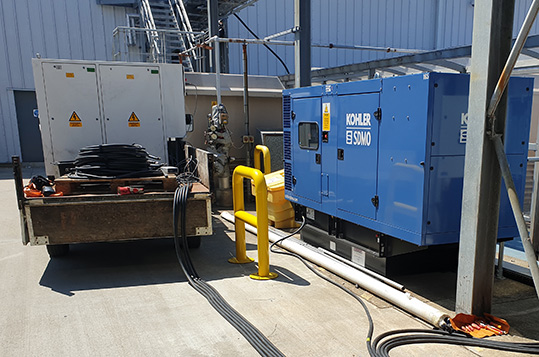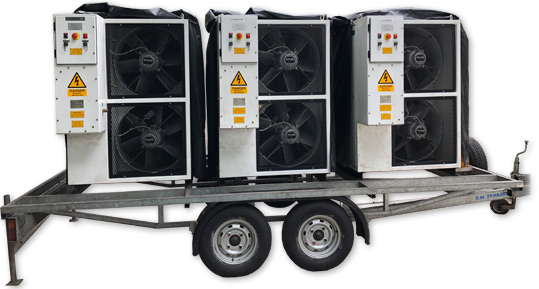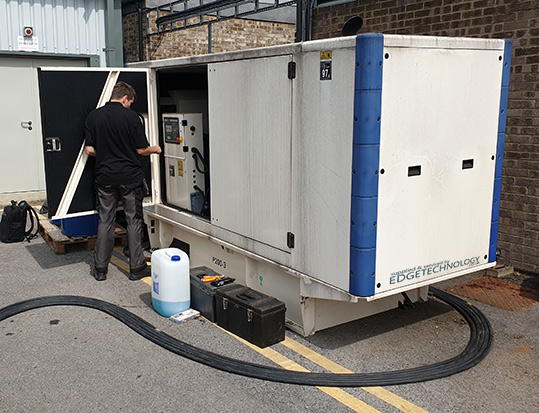What is an Industrial Generator Load Test?
Generators are hugely important for keeping your business up and running – that goes without saying! But how do you make sure that your primary or backup generator can deliver what you need when you need it? Perhaps more importantly, what would be the cost if your generator failed?
Maintenance is a crucial part of owning a generator, and load testing is arguably one of the most critical aspects.

What Does a Generator Load Test Mean?
The name somewhat speaks for itself. This test is designed to assess the capability of your generator to deliver the power (kW) expected. It achieves this by artificially submitting your generator to conditions expected when working at full capacity, in terms of pressure and temperature, to ensure all parts are working effectively.
What is Load Bank Testing?
Another name for this type of procedure is generator load bank testing. The term ‘load bank’ refers to the device used during the test, which controls the power levels of the generator.

How Does a Generator Load Test Work?
As mentioned above, a load test works by artificially putting your generator under full working conditions. However, instead of just ramping your standby generator up to 100% load, the process is more incremental.
Using a load bank, the test will start with a low kW output, recording the response of different parts of the generator over a period of time. Gradually, the kW output is increased, with recordings made at each step. Finally, the generator will be run at maximum kW output for a period, with various aspects of the generator analysed to ensure it can handle the workload.
Why is a Generator Load Test So Important?
Simply put, a generator load test is the most foolproof way to ensure that your generator can produce the power expected. While generators rarely need to deliver maximum output for sustained periods, it’s important that if that level is ever required, the generator will withstand the pressure.
Performing regular generator load tests is an essential part of routine maintenance. As a result, it can also be an important part of keeping your costly machine under warranty, along with reducing the likelihood of having to pay for repairs.
Load bank testing increases in importance the older your generator becomes. As most generators work automatically, small bits of wear and tear can sometimes go unnoticed until they become a significant issue. A load bank test will unearth any small issues inside your generator, allowing you to fix the problem quickly.
Wet Stacking
There is also a secondary benefit of performing a load test. When diesel generators are not used for a while, soot and unburned fuel can build up in the exhaust system. This is known as wet stacking, which can lead to a range of problems, including complete generator failure.
A load bank test drastically increases the temperature inside the generator, which in turn burns away any wet stacking, helping the generator to perform to its best for longer.

Do I Need a Generator Load Test?
Every generator should have a load bank test performed as part of annual maintenance.
If you have a standby generator, this should be tested once a year. A prime generator or one near the end of its lifespan may require more frequent testing, due to the increased stress on the machine. After all, you want to know for sure that your generator will continue to perform when needed.
Here at Edge Technology, we offer a complete power technology service including load bank testing. With over 20 years of experience working with generators, our team has all the expertise you need to ensure your generators are working as efficiently and effectively as possible.
If you’re interested in discovering more about our load bank testing services, why not give our team a call today?










